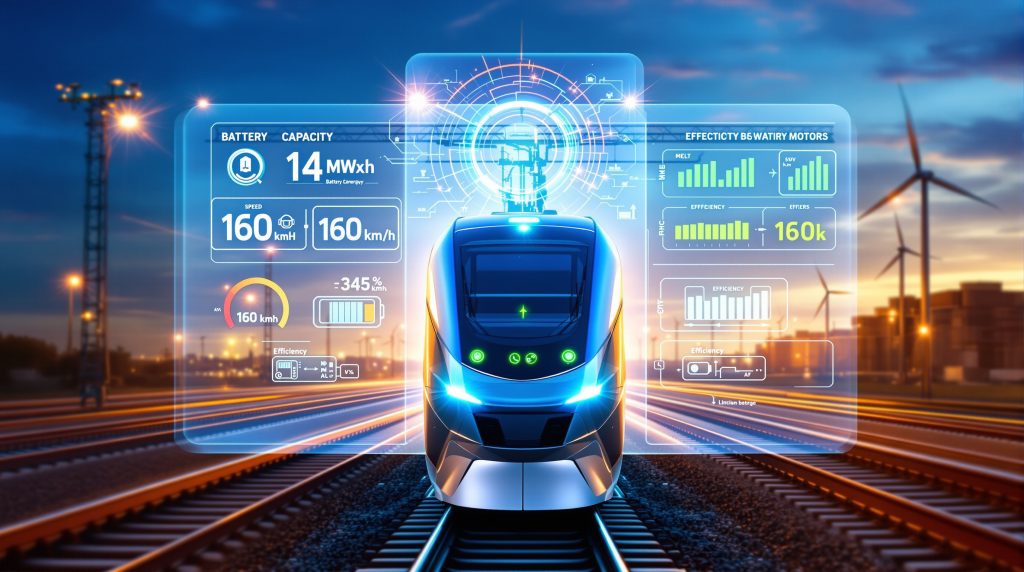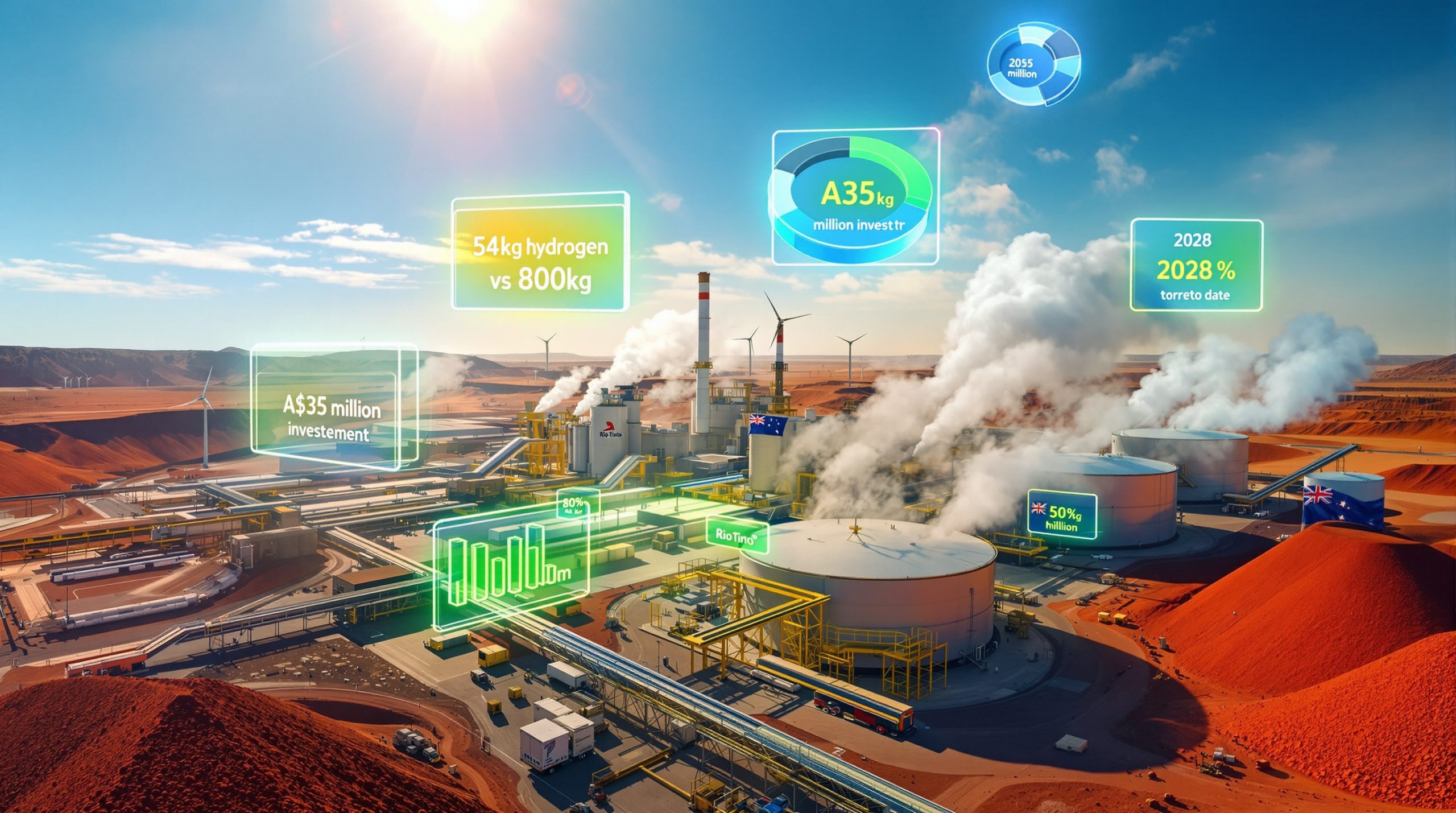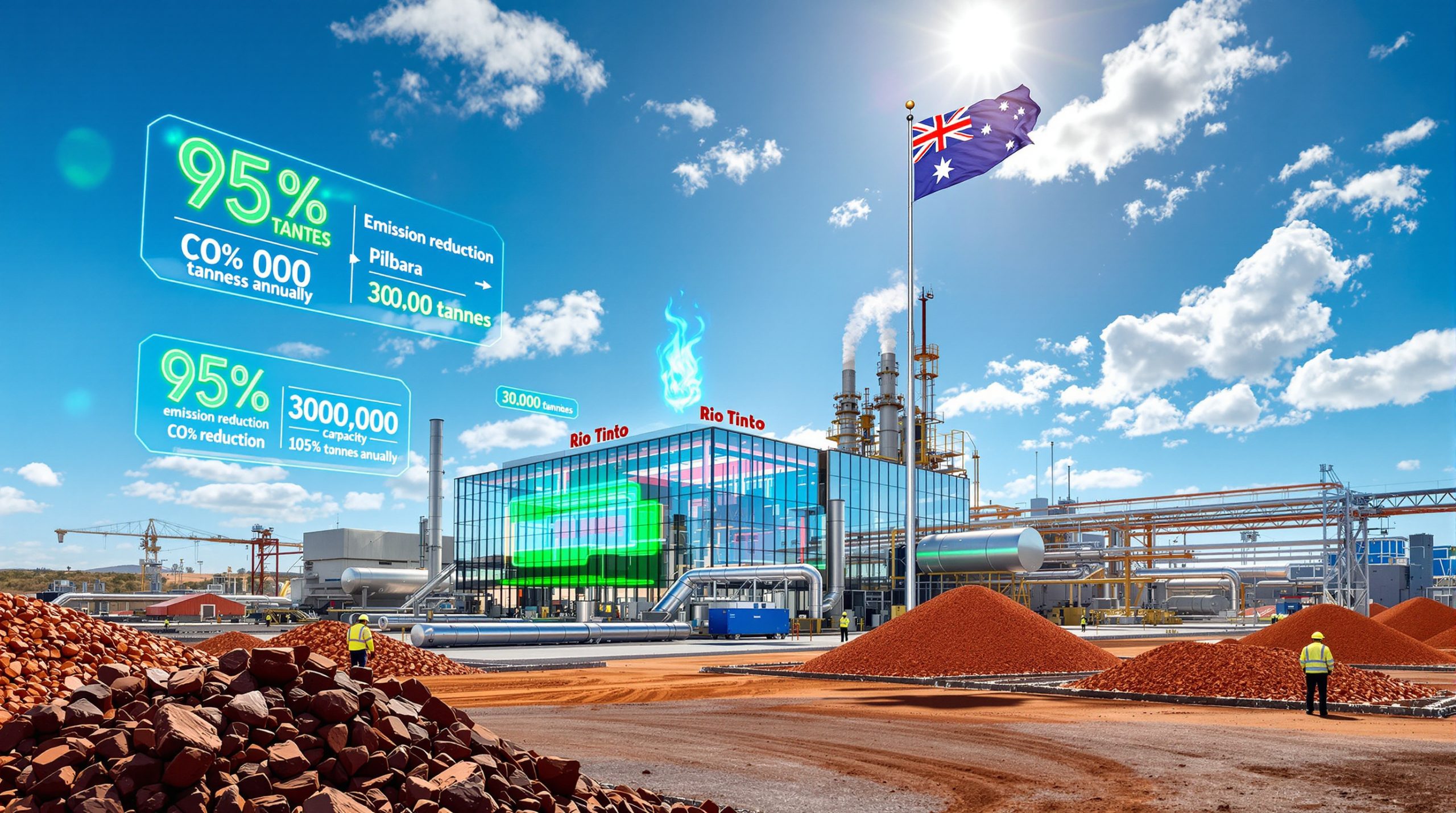What Are Battery-Electric Locomotives and Why Are They Revolutionizing Rail Transport?
Battery-electric locomotives represent a fundamental transformation in railway operations, utilising sophisticated lithium-ion energy storage systems to power electric motors without traditional overhead lines or third-rail infrastructure. These innovative machines capture and store electrical energy in high-capacity battery systems, typically delivering between 2 to 14 megawatt-hours of capacity for zero-emission rail transport across diverse network configurations.
The technology gained significant momentum in 2024 with BHP's deployment of Australia's first purpose-built battery-electric locomotives at Port Hedland operations in Western Australia. Each locomotive incorporates a seven-megawatt-hour battery system combined with regenerative braking technology that captures energy during downhill operations and feeds power back into the battery system to enhance efficiency and minimise waste.
Understanding the Technology Behind Electric Rail Innovation
Modern battery-electric locomotives integrate multiple advanced systems working in coordination to deliver reliable, emission-free operation. The core battery pack serves as the primary energy reservoir, while sophisticated power electronics convert stored DC energy into AC power for traction motors. Temperature management systems maintain optimal battery performance across extreme operating conditions, from arctic cold to desert heat exceeding 50 degrees Celsius.
The regenerative braking system represents a critical technological advancement, recovering kinetic energy during deceleration and converting it back to electrical energy for battery storage. This process can improve overall system efficiency by 20 to 40 percent compared to conventional braking systems that dissipate energy as heat.
Key Components That Drive Performance
Essential Battery-Electric Locomotive Systems
| Component | Function | Typical Specifications |
|---|---|---|
| Battery Pack | Energy storage | 2-14 MW·h capacity |
| Traction Motors | Wheel propulsion | 1,000-4,000 HP output |
| Regenerative Braking | Energy recovery | 20-40% efficiency gain |
| Thermal Management | Temperature control | -40°C to +50°C operation |
| Power Electronics | Energy conversion | 95%+ efficiency rating |
The modular battery architecture allows operators to configure energy capacity based on specific route requirements and operational demands. Advanced thermal management systems ensure consistent performance across temperature extremes, while intelligent power distribution optimises energy flow between battery modules and traction systems.
How Do Battery-Electric Locomotives Compare to Traditional Diesel Systems?
The transition from diesel to battery-electric propulsion delivers measurable advantages across environmental, operational, and economic metrics. Furthermore, battery-electric systems eliminate direct emissions at the point of operation, reducing greenhouse gas output by 30 to 50 percent compared to diesel alternatives when powered by mixed-grid electricity sources.
Operations utilising renewable energy sources can achieve emission reductions approaching 90 percent. This remarkable improvement in energy transition and security represents a crucial step towards sustainable rail transport.
Environmental Impact Analysis
Battery-electric locomotives contribute to significant air quality improvements, particularly in enclosed environments like tunnels and urban rail corridors. The absence of diesel exhaust eliminates particulate matter, nitrogen oxides, and sulfur compounds that contribute to respiratory health issues and environmental degradation.
Noise reduction represents another substantial benefit, with battery-electric systems operating 10 to 15 decibels quieter than equivalent diesel locomotives. This reduction proves especially valuable for operations in populated areas or noise-sensitive environments where community relations and regulatory compliance are priorities.
Economic Performance Metrics
Operational Cost Comparison:
- Energy expenses: 40 to 60 percent reduction compared to diesel fuel costs
- Maintenance requirements: 25 to 35 percent lower servicing needs
- Acoustic impact: 10 to 15 decibel operational sound reduction
- Capital investment: 15 to 25 percent higher initial equipment costs
The economic case for battery-electric locomotives strengthens over the equipment's operational lifespan. Reduced maintenance requirements stem from fewer moving parts, elimination of complex diesel engine systems, and decreased wear on brake components due to regenerative braking capabilities.
Which Industries Are Leading Battery-Electric Locomotive Adoption?
Heavy-haul mining operations have positioned themselves at the forefront of battery-electric locomotives deployment, with Australia's iron ore industry leading global adoption efforts. The sector's concentrated routes, predictable traffic patterns, and environmental compliance requirements create ideal conditions for battery-electric technology implementation.
Mining Sector Applications
BHP's Port Hedland deployment represents the culmination of years of planning and engineering development specifically designed for iron ore transport between Pilbara mines and port facilities. The harsh operating environment, characterised by extreme temperatures and demanding duty cycles, serves as a proving ground for the technology's commercial viability.
Mining applications benefit from several operational advantages:
- Regenerative efficiency optimisation on loaded downhill segments recovering substantial energy
- Reduced ventilation expenses in underground mining operations
- Enhanced air quality standards supporting worker health and safety protocols
- Reliable power delivery maintaining performance in extreme temperature conditions
These developments align with broader renewable energy innovations transforming mining operations worldwide.
Freight Railway Integration
Major freight networks are implementing hybrid locomotive configurations, combining battery-electric units with conventional locomotives to achieve fuel reduction while maintaining operational flexibility across electrified and non-electrified route segments.
Hybrid locomotive consists can reduce fuel consumption by 20 to 30 percent while preserving the ability to operate across diverse infrastructure configurations without range limitations.
What Are the Technical Specifications of Modern Battery-Electric Locomotives?
Contemporary battery-electric locomotives deliver impressive performance capabilities that rival and in some cases exceed traditional diesel systems. The BHP Port Hedland locomotives exemplify current technology standards with their seven-megawatt-hour battery capacity and advanced regenerative braking integration.
Power and Range Capabilities
Performance Specifications Comparison
| Metric | Standard Range | Heavy-Haul Range |
|---|---|---|
| Continuous Power | 1,500-3,000 HP | 4,000-6,000 HP |
| Battery Capacity | 2-7 MW·h | 7-14 MW·h |
| Operating Range | 150-300 km | 200-500 km |
| Charging Time | 2-4 hours | 4-8 hours |
| Maximum Speed | 120-160 km/h | 80-120 km/h |
The seven-megawatt-hour specification of BHP's locomotives positions them within the heavy-haul category, reflecting the demanding requirements of iron ore transport in the Pilbara region. These specifications enable sustained operation across extended distances while maintaining adequate energy reserves for unexpected operational demands.
Advanced Energy Management Systems
Modern battery-electric locomotives incorporate sophisticated software systems that optimise energy utilisation based on route characteristics, load conditions, and operational priorities:
- Predictive algorithms utilising route topology data to optimise battery discharge patterns
- Dynamic load balancing distributing energy demands across multiple battery modules
- Temperature-controlled charging protocols extending battery lifespan and maintaining capacity
- Real-time monitoring systems providing continuous feedback on energy consumption and regeneration
These systems work collectively to maximise operational efficiency while protecting the substantial investment in battery technology through intelligent management protocols.
How Are Major Manufacturers Advancing Battery-Electric Technology?
The battery-electric locomotives market features several leading manufacturers developing distinct technological approaches to meet diverse operational requirements across global markets.
Leading Technology Providers
Wabtec Corporation has established itself as a pioneer in heavy-haul battery-electric applications through their FLXdrive platform. The company's partnership with BHP demonstrates their capability to engineer solutions for extreme operating environments, with locomotives purpose-built to withstand the demanding conditions of the Pilbara region's extreme heat and operational intensity.
Progress Rail has developed the EMD Joule series, targeting mining applications with industry-leading 14.5 megawatt-hour battery capacity. Their approach emphasises maximum energy storage to support extended-range operations in remote mining environments where charging infrastructure may be limited.
Siemens Mobility focuses on passenger service applications through their Charger B+AC platform, optimising energy efficiency for intercity and regional passenger transport where schedule reliability and passenger comfort are paramount considerations.
Innovation Trends Shaping the Market
Current development efforts concentrate on several key technological advancement areas:
- Solid-state battery integration promising 40 percent capacity improvements over current lithium-ion technology
- Wireless charging systems enabling continuous operation without physical connection requirements
- Artificial intelligence optimisation reducing energy consumption through predictive route management
- Modular design approaches allowing scalable power configurations based on specific operational needs
These innovations address current operational limitations while positioning battery-electric locomotives for expanded applications across diverse rail networks and operational requirements. In addition, advances in direct lithium extraction technology are improving the supply chain for critical battery materials.
What Challenges Do Battery-Electric Locomotives Face?
Despite significant technological progress, battery-electric locomotives confront several operational and economic challenges that influence adoption decisions across different railway applications.
Technical Limitations and Solutions
Current Operational Challenges:
- Range constraints on long-distance routes lacking charging infrastructure development
- Elevated capital costs relative to established diesel locomotive alternatives
- Battery capacity degradation affecting long-term economic performance projections
- Infrastructure development requirements for widespread network deployment
Emerging Technical Solutions:
- Fast-charging pantograph systems reducing operational downtime to 15 to 30 minute intervals
- Battery swapping technologies enabling continuous operation through rapid module exchange
- Hybrid configurations integrating battery and fuel cell technologies for extended range capability
- Grid integration systems utilising renewable energy sources for sustainable charging operations
Infrastructure Development Requirements
Successful battery-electric locomotives deployment requires coordinated investment in charging infrastructure strategically positioned throughout the rail network. Charging facilities must be located at rail yards, maintenance facilities, and key route intervals to ensure operational continuity without range limitations.
The electrical grid capacity represents a critical consideration, as large-scale locomotive charging operations require substantial power delivery capability that may exceed existing infrastructure in some locations. Recent developments in battery-grade lithium news highlight the growing importance of secure supply chains for critical materials.
Where Are Battery-Electric Locomotives Being Successfully Deployed?
Global deployment of battery-electric locomotives spans multiple continents and applications, with mining operations leading adoption followed by freight and passenger rail implementations.
Global Implementation Examples
North America has seen pilot programs across major freight networks, with BNSF Railway conducting trials in California freight corridors and Union Pacific implementing yard switching applications. Amtrak continues exploring passenger service integration opportunities on routes with mixed electrification.
Europe leads passenger applications, with Swiss Federal Railways operating battery-electric multiple units on regional routes. German DB Cargo has initiated freight application testing, while United Kingdom operators convert regional routes from diesel to battery-electric operation.
Asia-Pacific deployment centres on Australia's mining sector, where BHP's Port Hedland operations represent the region's most advanced commercial implementation. Japanese railways integrate battery units on non-electrified lines, while Chinese manufacturers scale production for expanding domestic markets.
Sector-Specific Applications
Mining Operations dominate current deployments:
- Iron ore transport in Western Australia's Pilbara region through BHP's pioneering program
- Coal mining applications in Queensland and New South Wales operations
- Underground mining requiring zero-emission technology for worker health and safety
Urban Transit Applications:
- Commuter rail services on partially electrified networks extending operational range
- Light rail extensions beyond traditional catenary infrastructure limitations
- Airport and port operations requiring quiet, emission-free terminal area service
What Does the Future Hold for Battery-Electric Rail Technology?
Industry projections indicate robust growth potential for battery-electric locomotives technology driven by environmental regulations, technological advancement, and economic factors improving the business case for adoption.
Market Growth Projections
Market analysts forecast annual growth rates of 15 to 20 percent through 2030, supported by multiple driving factors:
- Environmental regulations mandating emission reduction across transportation sectors
- Battery cost reductions improving economic viability compared to diesel alternatives
- Technology advancement extending operational capabilities and reducing limitations
- Infrastructure investment supporting widespread adoption across rail networks
Next-Generation Developments
Anticipated Innovation Areas:
- Hydrogen-battery hybrid systems combining extended range with zero-emission operation capability
- Dynamic wireless charging enabling continuous operation without scheduled charging stops
- Autonomous operation integration optimising energy efficiency through AI-driven route management
- Grid-to-train energy storage supporting renewable energy integration and grid stability
These developments address current operational constraints while expanding potential applications across diverse rail transportation markets and operational requirements. Furthermore, recent battery recycling breakthrough innovations are addressing sustainability concerns throughout the battery lifecycle.
How Can Rail Operators Evaluate Battery-Electric Locomotive Adoption?
Railway operators considering battery-electric locomotives implementation require systematic evaluation frameworks addressing technical, economic, and operational factors specific to their network characteristics and business requirements.
Decision Framework for Implementation
Critical Evaluation Criteria:
- Route characteristics including distance profiles, grade variations, and traffic density patterns
- Environmental compliance requirements and emission reduction mandates
- Economic analysis encompassing total cost of ownership over 20 to 25 year equipment lifecycles
- Infrastructure readiness including charging capability development and electrical grid capacity
- Operational integration requirements with existing locomotive fleets and maintenance capabilities
Implementation Strategies
Recommended Phased Deployment:
- Phase 1: Yard switching and short-haul applications for operational experience development
- Phase 2: Regional freight and passenger service integration with proven technology
- Phase 3: Long-haul integration coordinated with charging infrastructure development
- Phase 4: Comprehensive fleet electrification utilising renewable energy sources
Successful implementation requires pilot programs in controlled environments to validate technology performance and operational procedures before expanding deployment across entire rail networks.
Rail operators should collaborate with technology providers, electrical utilities, and regulatory agencies to ensure coordinated development of charging infrastructure and operational protocols supporting long-term technology adoption success. However, careful consideration of lifecycle costs and operational requirements remains essential for successful deployment.
Disclaimer: This article contains forward-looking statements about technology development, market projections, and performance capabilities. Actual results may vary based on technological advancement, market conditions, and regulatory changes. Readers should conduct independent research and consult with qualified professionals before making investment or operational decisions regarding battery-electric locomotive technology.
Ready to Capitalise on the Next Mining Innovation Breakthrough?
Discovery Alert's proprietary Discovery IQ model delivers real-time alerts on significant ASX mineral discoveries, instantly empowering subscribers to identify actionable opportunities ahead of the broader market as mining companies adopt revolutionary technologies like battery-electric locomotives. Explore Discovery Alert's dedicated discoveries page to understand why historic mineral discoveries can generate substantial returns, then begin your 30-day free trial today to position yourself ahead of the market.




